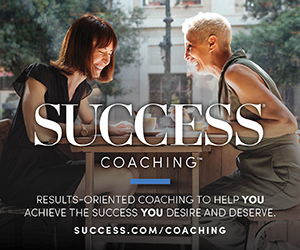You are a creative person. Even if you think your imagination stalled out in elementary school, and even if your indecipherable stick figure drawings make you everyone’s last choice for Pictionary, creativity is an essential part of who you are.
We often assume that creativity is limited to people with a gift for painting, an eye for décor or a natural ability to spin an everyday story into an engrossing tale that makes others want to lean in. But creativity is so much more than whimsical design or right-brain thinking. It’s creativity that we turn to when we need to organize a haphazard closet, solve conflict at work, and turn a month’s worth of pay into food on the table and a safe place to live. Creativity is in everyone.
In a pandemic world, however, our search for the spark that inspires us to action or art can leave us feeling empty-handed. Working virtually means we don’t have access to the watercooler chatter and work lunches that input language and the nuance of body language into our days. Curbside pickups, outdoor seating and takeout at home have worked to keep us safe, but they have also limited the innocuous interactions that come with people watching and chatting with baristas.
Then there’s the deletion of calendar-specific events that keep our brains turning the page. Concerts, neighborhood gatherings, family reunions, summer vacations, spring break plans—their postponement is only temporary, but the momentary impact of their absence is real.
As winter settles in, and the isolation of the pandemic continues, you might find yourself commiserating with Bill Murray’s character in the movie Groundhog Day, who woke up to find himself living the same day over and over again.
The monotony of waking up, working, celebrating, eating and relaxing within the same four walls can drain us emotionally and creatively, but even if you wouldn’t describe yourself as artistic, finding ways to inspire the creativity that naturally runs through your veins is crucial. Whether you design engineering marvels, write poetry or manage complex supply chain logistics, the world needs your creative perspective.
If living in your own version of Groundhog Day has left you feeling a tad uninspired, try these creativity catalysts to reignite the spark of your imagination and tap into the innovative spirit that only you can offer.
1. Redefine creativity.
Creativity injects magic into the mundane. Toothbrushes come in a rainbow of colors not because it makes them more effective at cleaning teeth, but because they are meant to catch our eye as we’re shopping for a pretty straightforward tool. Art and functionality go hand-in-hand and it fills every corner of our lives. There is artistry in what we choose to wear, the meals we make and the jokes we tell over (socially distanced) drinks. If we limit creativity to finite categories, we deprive ourselves and others of the resourceful beauty that makes pedestrian tasks more enjoyable. Skillfully crafted works of art meant for museums and color-coded spreadsheets that make meetings run smoother both draw from the same well of imagination. Tune in to the unique ways you make everyday tasks shine and you’ll discover your own brand of creativity.
2. Develop creative muscle memory.
Monotony can drain our imaginative energy but it can also serve as fuel when harnessed properly. Pay attention to when you feel your work flow rising and the mental blocks against creativity fading away. What do your surroundings look like when that happens? Is there music or total silence? What time of day is it? Are you sitting or walking, in a group or alone, outside or in? Arranging these small factors with intention and repetition can create a daily rhythm so that eventually, the surroundings do the heavy lifting of signaling to your mind that it’s time to commit to creativity and avoid distraction.
3. Unravel your rhythms.
Once you’ve developed a pattern of how and when you create, turn it upside down every now and then. If you usually sketch in the mornings, brew a pot of coffee and draw by lamp light. Change up your lunch order, listen to music instead of podcasts during your afternoon workout, take a different route to work or cook something you’ve never tried before. All of these simple tweaks may seem silly, but turning off autopilot can be the key that unlocks a creative solution to a crisis at work or offers clarity for a project that has left you stuck.
4. Always, always take notes.
Everyone knows the feeling of waking up in the middle of the night with a brilliant idea only to discover it has vanished from memory by morning. Some of our most visionary ideas are lost simply because we failed to jot them down, but taking notes doesn’t have to be time consuming or cumbersome. Utilize the Notes app to tap out quick ideas while in line at the store and record your brainstorms on the go using Voice Memos on your phone. Evernote or OneNote offer digital storage solutions to keep your notes and thoughts organized, even if they start out as scribbles on the back of a receipt. Don’t rely on a crowded mental list. When inspiration strikes, take note.
5. Travel outside your comfort zone.
Our most creative moments happen when we voyage into the unfamiliar. Staying within the safety of what we do best rarely leads to revelations or wow moments. It’s pushing ourselves into a category we don’t know how to expertly navigate that forces us to leverage our creative skills. Professionally, that means daring to work outside of your specialized niche. If you’re a grant writer, try your hand at fan fiction. If you’re a vegetable farmer, plant one bed exclusively filled with flowers. The goal isn’t to become an expert in a new field, but rather to poke and prod what you’re already great at from a new angle to find the innovation that is lurking underneath the surface.
6. Try to fail.
Anyone you consider an expert today was a bumbling novice when they started. It takes time and practice to be accomplished, which means you’ll have to be willing to be truly terrible for a while. Acknowledging that failure is part of the process opens the door to creativity in bold ways because it prevents us from demanding excellence in order to start. When we decide that perfection is meant for the finish line, we allow the beginning to be full of necessary mistakes. Offering ourselves the privilege of failing gives us the freedom we need to fly.
7. Put deadlines to work.
Pressure and creativity make a powerful pair. It is remarkable how inventive and industrious a person can become when they are racing against the clock. If your project doesn’t have a deadline, set one. Tell a friend or announce it to your team to add an additional layer of urgency and accountability. Endless amounts of time don’t breed clever solutions, but time constraints and healthy peer pressure do.
8. Close the programs running in the background.
Sometimes the programs burning up the most CPU and memory on a computer are the programs we don’t even know are running. Like a computer, you are processing and managing multiple things each day and diminishing your bandwidth for visionary or imaginative thinking. To unplug, take a walk without headphones and pay attention to the intricacies of the world you encounter. Listen to the way the wind sounds as it blows through the leaves. Pause and pay attention to the way a duck glides on a lake or a squirrel nibbles on acorns. Focusing intently on surroundings that ask nothing from you in return can serve as a reboot and clear out the mental clutter that slows us down.
9. Find the fun.
A few scrolls through social media can make it seem like creativity comes easy, but that’s not real life. Ditch the creativity comparison game and get back to basics by creating simply for the fun of it. Paste memories together into a colorful scrapbook, reupholster an old chair, make DIY fishing lures—whatever hobby provides so much enjoyment that you lose track of time. Separate creativity from unrealistic expectations and watch it roar back to life.
10. Burn excess energy.
There is an uncanny connection between our physical movement and mental progress. Warming up our muscles and causing our heart to beat a little faster has the ability somehow to clear the fog of confusion or apathy. Go for a walk, dance to music, do jumping jacks in the living room—anything that gets your body moving. It’s important to listen to your body, but you can’t hear it unless you give it a chance to speak.
Photo by stockfour/Shutterstock.com



